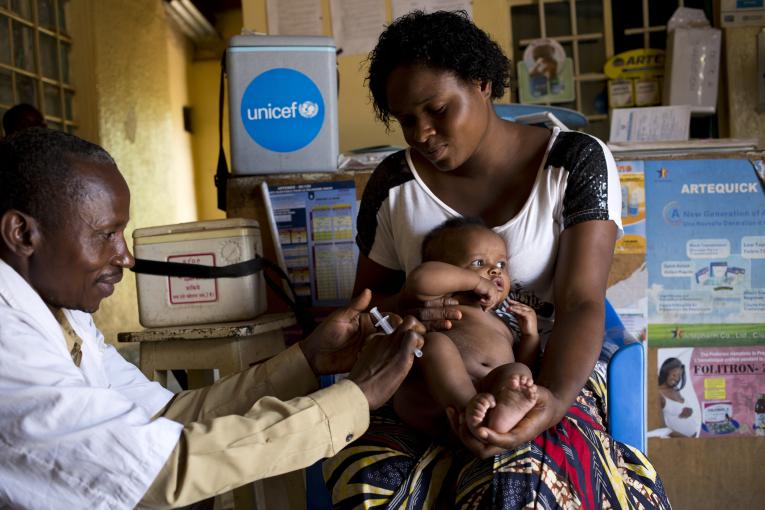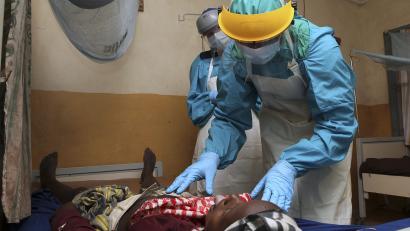
Coronavirus (COVID-19) is not the most deadly disease, there are others diseases that are deadlier. While some are pandemic, others are epidemic. Here, TalkGlitz will only be giving 5 deadlier diseases than coronavirus. We have:
Hepatitis
Viral hepatitis caused an annual 1.34 million deaths worldwide in 2015. While deaths due to other infectious diseases have declined, deaths due to viral hepatitis have actually increased by 22% since 2000, according to a WHO report. Although five types of hepatitis exist including hepatitis A, D, and E hepatitis B and C are responsible for 96% of all hepatitis related deaths. Most of these deaths are due to chronic liver disease and primary liver cancer. Approximately 325 million people, or 4.4% of the world’s population, have viral hepatitis and 1.75 million new infections of hepatitis C alone occur each year. Despite a vaccine for hepatitis B and effective antivirals for hepatitis C, few people with viral hepatitis get a diagnosis because of limited access to affordable hepatitis testing. Only 9% of people with hepatitis B and 20% with hepatitis C have received a diagnosis, according to the WHO. Consequently, treatment reaches only a small fraction of those infected.
Middle East Respiratory Syndrome (MERS)
COVID-19 isn’t the only coronavirus in town these days. Middle East respiratory syndrome (MERS) is caused by a rare but deadly virus mostly found in Saudi Arabia. Since it was first identified in 2012, MERS has infected 2,499 people and caused 861 deaths globally, according to the WHO. Clearly, that’s just a fraction of the numbers reported for COVID-19, but the difference is in the mortality rate. MERS has had a mortality rate as high as 37.2% compared with the current estimated mortality rate of 2% to 3% for COVID-19. Like COVID-19, infection from MERS coronavirus (MERS-CoV) shows symptoms of fever, cough, and shortness of breath. Unlike COVID-19, MERS-CoV infection often stems from camels. “Although most human cases of MERS-CoV infections have been attributed to human to human infections in health care settings, current scientific evidence suggests that dromedary camels are a major reservoir host for MERS-CoV and an animal source of MERS infection in humans,” the WHO warned. No vaccine or specific treatment is currently available for MERS-CoV, but some are in development.

Ebola
The Democratic Republic of the Congo recently is fighting the world’s second largest Ebola epidemic on record. Almost 3,000 people have died and 3,432 have been infected since the outbreak was declared in August 2018, according to the WHO. Ebola is rare, but it has a high mortality rate of about 50% (although that rate has ranged from 25% to 90% in past outbreaks). The 2014–2016 outbreak in West Africa was the largest Ebola epidemic to occur: 28,610 people were infected and 11,308 died. Experimental vaccines have been shown to help control the spread of Ebola outbreaks in Guinea and in the Democratic Republic of the Congo.
HIV/AIDS
At the end of 2018, approximately 37.9 million people worldwide were living with HIV. In the same year, 770,000 people died from HIV-related causes and 1.7 million people were newly infected. Since the virus was first discovered, more than 32 million people worldwide have died as a result of HIV, according to the WHO. Although it continues to be a major global public health issue, “HIV infection has become a manageable chronic health condition, enabling people living with HIV to lead long and healthy lives,” the organization noted. 62% of adults and 54% of children living with HIV in low and middle income countries are now receiving antiretroviral therapy, which has become the primary treatment for the virus. New HIV infections fell by 37% and HIV-related deaths dropped by 45% between 2000 and 2018, with an estimated 13.6 million lives saved due to antiretroviral therapy. “This achievement was the result of great efforts by national HIV programmes supported by civil society and international development partners,” according to the WHO.
However, now is not the time to become complacent. The estimated 1.1 million Americans living with HIV in the US, about 14% (or 1 in 7) of them don’t know it and need to be tested. Meanwhile, more than 38,000 new HIV infections occur in the United States each year.
Influenza
While COVID-19 has caused a great deal of fear and concern, there’s a more widespread and more deadly virus going around the flu. Worldwide, the flu causes about 3 to 5 million cases of severe illness and about 290,000 to 650,000 deaths each year, according to the latest estimate.
In the United States, at least 22 million people have gotten the flu in the 2019-2020 seasons so far and 12,000 have died from it including at least 78 children according to the most recent report from the CDC. While there’s no treatment or yearly vaccine for COVID-19 like there is for the flu, COVID-19 has warranted a high level of caution and extensive containment procedures. If seasonal flu were given as much regard, fewer people would likely die from it, experts say.

Worthy of note is the Nigeria Lassa Fever. Nigeria is dealing with what is turning out to be the world’s largest epidemic of Lassa fever, a viral disease deadlier than coronavirus. Lassa fever is a severe viral hemorrhagic fever (VHF) like Ebola and Marburg that occurs throughout the year in Nigeria and was declared an “active outbreak” by the Nigeria Centre for Disease Control (NCDC) five weeks into 2020. The epidemic which occurs during the annual dry season (roughly November through March) has spread across half the country. The Lassa fever virus is transmitted to humans through contact with food or household items contaminated with urine and feces of a rat. It’s also known to spread from person-to-person through contact.





Comments are closed.